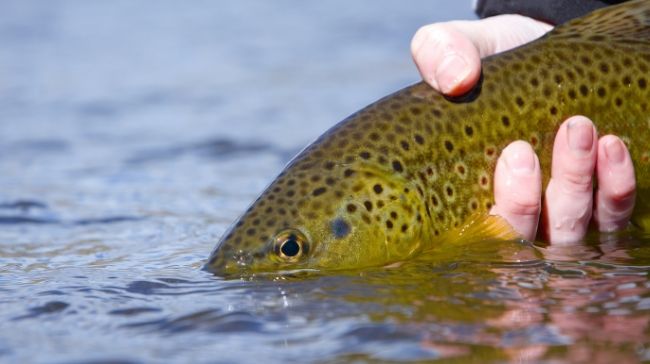This segment called "Bug Parts" is for new tyers. When tying flies you hear people referring to what materials they used for the various parts of the bug they are tying. For instance, "I used black fine and dry dubbing for the Trico's thorax". For the second year tyer that might make perfect sense but for the rest of the human population what does that mean?
Photo and fly by Jon Kleis
 Mayflies in both their nymph and adult stage's are divided into several different parts. We will start with the adult mayfly. The first and most obvious part is the tail which is followed by the abdomen. The abdomen on the fly pictured is tied with black thread and a crystal flash overbody that is wrapped forward (wrapping a material forward is sometimes refered to as palmering or palmered) around the hook shank. The second obvious part of this imitation of an adult Trico is the wing which in this case is tied with white Antron yarn and is laid out on either side and imitates a spent spinner. The thorax is just behind the head of the fly where the wing connects and is the thickest part of the bug and is tied with thread for this example. And of course the head of the fly is where you finished your bug and tied off your thread using a whip finish knot.
Mayflies in both their nymph and adult stage's are divided into several different parts. We will start with the adult mayfly. The first and most obvious part is the tail which is followed by the abdomen. The abdomen on the fly pictured is tied with black thread and a crystal flash overbody that is wrapped forward (wrapping a material forward is sometimes refered to as palmering or palmered) around the hook shank. The second obvious part of this imitation of an adult Trico is the wing which in this case is tied with white Antron yarn and is laid out on either side and imitates a spent spinner. The thorax is just behind the head of the fly where the wing connects and is the thickest part of the bug and is tied with thread for this example. And of course the head of the fly is where you finished your bug and tied off your thread using a whip finish knot. |
| Click on photo to enlarge for a better view |
Before Mayflies become spinners they emerge to become Duns which is the first adult stage of the bug after it has emerged and is free of its nymphal shuck. The Dun trico has a short tail and tends to be a light olive or tan color instead of black like you see on a spinner, even though my favorite fly to fish all the way through the trico hatch from start to finish is the John Barr pattern called the Viz-a-dun and is black in color. Duns also have strong wings that stand mostly upright. The parts of the Dun as it pertains to tying are refered to using the same terminology as a spinner (tail, abdomen,wing, thorax). Just be aware that there are different colors and traits such as the upright wing that you are imitating while sitting at your vice tying duns.
 |
| Click on photo for enlarged view of this Parachute Adams |
 |
| Barr's Viz-a-dun Trico. Notice the hackle is palmered around the hook to form the thorax? This is how it's done on most traditional dry flies tied with hackle. |
If there is anything I want you guys to take away from this read it is to have a better understanding of the four major parts of an adult mayfly pattern and also a clear understanding of what a parachute fly looks like and its benefits. A really good book to purchase for tying mayflies is the late Shane Stalcup's book called "Mayflies Top To Bottom". Also Ed Engle has a great book out that will help you get started tying those really tiny bugs for these technical Colorado tailwaters called "Tying Small Flies". Both books are more advanced but still have helpful information for beginners. If you have enjoyed reading this post or my blog in general help keep it going by clicking the join this site button and subscribing!
To book me for a trip on the South Platte river shoot me an email at jonkleisflyfishing@yahoo.com
Thanks again and tight lines!


No comments:
Post a Comment